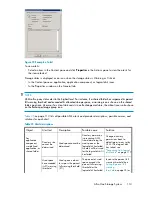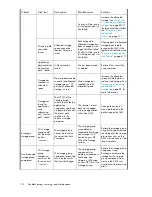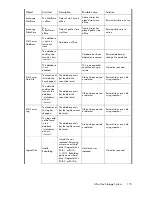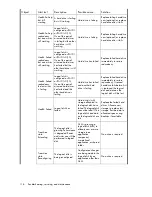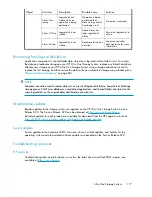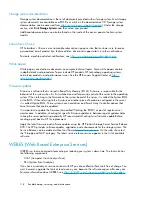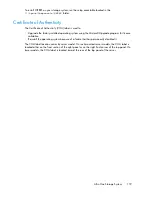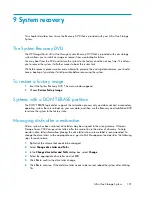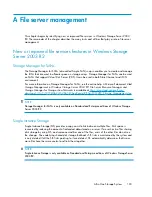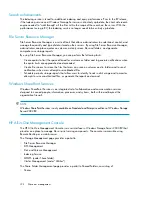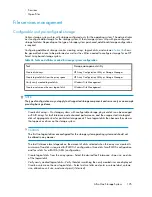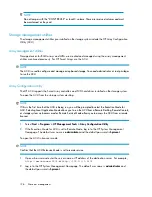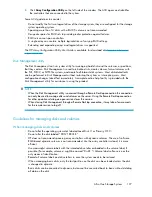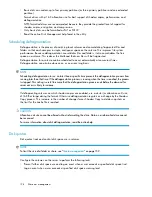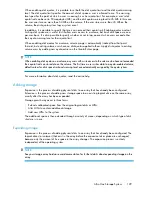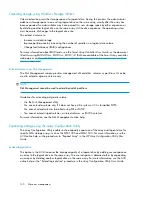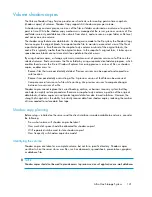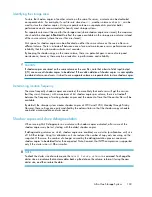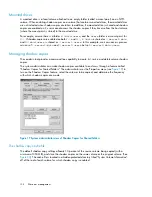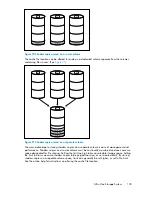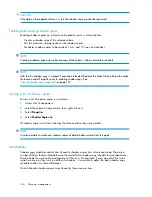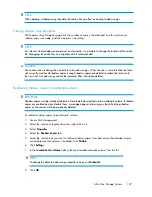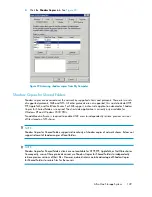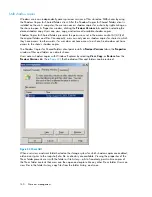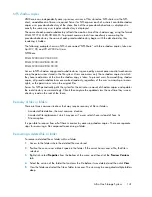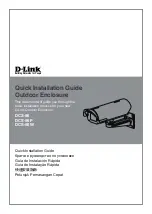
3.
Click
Array Configuration Utility
on the left side of the window. The ACU opens and identifies
the controllers that are connected to the system.
Some ACU guidelines to consider:
•
Do not modify the first two logical drives of the storage system; they are configured for the storage
system operating system.
•
Spanning more than 14 disks with a RAID 5 volume is not recommended.
•
Designate spares for RAID sets to provide greater protection against failures.
•
RAID sets cannot span controllers.
•
A single array can contain multiple logical drives of varying RAID settings.
•
Extending and expanding arrays and logical drives is supported.
The
HP Array Configuration Utility User Guide
is available for download at
http://www.hp.com/
support/manuals
.
Disk Management utility
The Disk Management tool is a system utility for managing hard disks and the volumes, or partitions,
that they contain. Disk Management is used to initialize disks, create volumes, format volumes with
the FAT, FAT32, or NTFS file systems, and create fault-tolerant disk systems. Most disk-related tasks
can be performed in Disk Management without restarting the system or interrupting users. Most
configuration changes take effect immediately. A complete online help facility is provided with the
Disk Management utility for assistance in using the product.
NOTE:
•
When the Disk Management utility is accessed through a Remote Desktop connection this connection
can only be used to manage disks and volumes on the server. Using the Remote Desktop connection
for other operations during an open session closes the session.
•
When closing Disk Management through a Remote Desktop connection, it may take a few moments
for the remote session to log off.
Guidelines for managing disks and volumes
When managing disks and volumes:
•
Do not alter the operating system disk labeled Local Disk C: or Primary OS C:.
•
Do not alter the disk labeled “DON'T ERASE.”
•
HP does not recommend spanning array controllers with dynamic volumes. The use of software
RAID-based dynamic volumes is not recommended. Use the array controller instead; it is more
efficient.
•
Use meaningful volume labels with the intended drive letter embedded in the volume label, if
possible. (For example, volume e: might be named “Disk E:.”) Volume labels often serve as the
only means of identification.
•
Record all volume labels and drive letters in case the system needs to be restored.
•
When managing basic disks, only the last partition on the disk can be extended unless the disk
is changed to dynamic.
•
Basic disks can be converted to dynamic, but cannot be converted back to basic without deleting
all data on the disk.
All-in-One Storage System
127
Summary of Contents for STORAGEWORKS ALL-IN-ONE STORAGE SYSTEM
Page 14: ...14 ...
Page 34: ...Installing and configuring the server 34 ...
Page 60: ...Storage management overview 60 ...
Page 88: ...Data protection 88 ...
Page 120: ...Troubleshooting servicing and maintenance 120 ...
Page 122: ...System recovery 122 ...
Page 172: ...Microsoft Services for Network File System MSNFS 172 ...
Page 204: ...Index 204 ...

